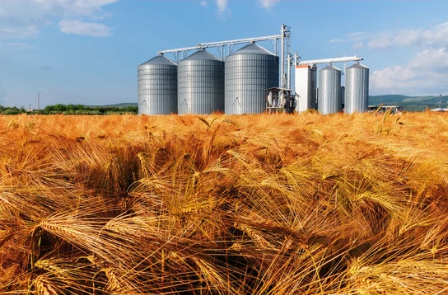
Articles & Insights
Grain losses in silos due to pests and rodents

The main purpose of a grain silo is to maintain the quality of grain by keeping exterior elements such as pests and undesirable weather at bay. These iconic structures are a familiar sight in grain-producing countries. The majority of South Africa’s silos were constructed after the mid-1970s, according to father-and-daughter team, Hendrik and Kitty van Aswegen, the CEO and general manager, respectively, of the Grain Training Institute (GTI).
They refer to a typical concrete silo with reinforcing steel, which normally has an estimated lifespan of around 30 years before deterioration sets in. Several of these aging giants are facing significant challenges. For example, rust build-up on the rebar leads to cracking and structural weaknesses, creating pathways for water ingress, especially during heavy rainfall. Coupled with inadequate sealing, this results in water leakage and ineffective fumigation. The latter leads to insect resistance due to insufficient gas concentrations, allowing pests in various developmental stages to thrive.
A century of challenges and costs
According to the Van Aswegens grain damage and losses in South Africa in the early 1980s were estimated at 3 to 5% of the crop, a figure far lower than the global average of 10% and significantly less than the 50 to 100% losses seen in other regions in Africa at the time. This disparity highlighted the importance of proper storage techniques. Initially, grain was received, screened, and cleaned to remove foreign matter and screenings, insect- sustaining food substances. However, with increasing crop volumes, this practice shifted to screening during intake, with storage facilities retaining the screenings.
The dismantling of the former control boards, which previously enforced stringent hygiene protocols with two-week deadlines for insect eradication (and major fines if protocols were not met), marked a turning point. The advent of semi-rigid marketing systems further influenced practices, with cost-cutting measures leading to reduced labour, and diminished cleaning and hygiene efforts.
It is all good and well to maintain and clean a facility, but cleaning an already infested facility presents significant challenges. Fungal and mould growth, exacerbated by moisture, further contributes to spoilage, often outpacing insect damage. In addition, rodent infestation is a largely unquantified source of loss, due to management often overlooking the possible sheer scale of the problem. For example, rodents consume 10% of their bodyweight daily and are potent vectors for diseases. The damage extends far beyond grain consumption and contamination, encompassing significant structural and equipment deterioration.
A widespread practice within the South African grain storage environment is the re-integration of screenings, as long as it adheres to grading standards. This method, however, frequently undermines its own purpose due to the screenings providing a rich environment for insect activity (illustrating the enduring validity of the principle: If you remove the food, you remove the insects).
Going back to basics
“The root causes of crippling losses can often be ascribed to poor hygiene and disregarded storage protocols at storage facilities,” says Hendrik. “This underscores the importance of professional inspections where, among others, guidance in personnel retraining and corrective measures can bring about a remarkable drop in costs, thus initiating huge savings. This includes reinforcing crucial principles such as revised and updated training, prioritising hygiene, and good storage practices, including rodent control, which facilitate a deeper understanding of product quality and infestation.”
Regarding the damaging impact of pests and rodents in grain silos, Renier Vermaak, regional manager: fumigation at Senwes, says: “To prevent food products from being contaminated we require proper control of vermin infestations, especially in grain environments and food facilities. While rodents tend to feast more on protein-based commodities, they also target germinating grains, which not only leads to crop yield losses, but also has a negative impact on kernel nutrition and safety.”
Click here to read full article for by Carin Venter
